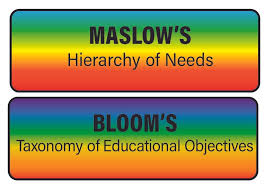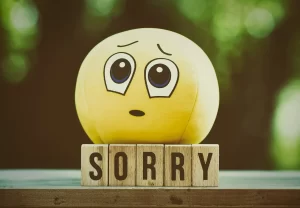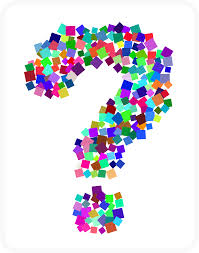Abraham Maslow’s well-known theory of human needs fits well in the context of COVID-19. His theory is that human needs are arranged hierarchical and supersedes the others when ones are satisfied. Maslow categorized needs in a triangle format. Basic physiological needs are the foundation. The next four levels are safety needs, social needs, esteem needs, and self-actualization. Children and teens must acquire the basic needs at each level before functioning successfully at the next stage.
Benjamin Bloom’s Taxonomy is also a hierarchical classification of the six different levels of thinking. Educators use these when creating course and lesson objectives.
“Maslow before Bloom” is popular phrase in education circles. It is typically used to communicate that before academic learning can be fully embraced, children and teens need their basic needs met.

Children’s and Teen’s Challenges Created by Covid-19
The critical challenges created by COVID-19 for child and teen well-being underscores children’s and teen’s distinctive needs, as well as the unique implications for policies. Let’s look at four challenges facing children and teens.
Higher Family Stress
The day-to-day lives of many families has sharply increased the levels of stress since the pandemic. Chronic or prolonged stress impacts children’s developing biological systems, especially in the early years. Healthy child development consequences can be both immediate and long-term.
Pre-existing educational inequalities are likely to exacerbate school closures and the change to remote learning. “The learning gains or losses made by children during school and Early Childcare and Education Centre (ECEC) closures vary significantly by access to remote learning, the quality of remote instruction, home support, the degree of engagement in schoolwork, and the overall attitude towards learning.”1
Greater Need for Mental Health Supports
Higher anxiety and depression scores of vulnerable children reported lower levels of well-being than before the pandemic. Direct surveys with children identified a deterioration in mental health, greater loneliness, and worries for themselves, their families, and their futures.
Children and Pandemic Burnout
Burnout is described as symptoms of emotional or physical exhaustion caused by long-term stress. Factors are making children vulnerable to burnout, such as unstable learning environments, prolonged isolation, housing insecurity, systemic racism, and various other factors. According to Dr. Earl, children, particularly those in “Black and brown”2 neighborhoods were left without the usual mentorship and support they would receive from their communities, families, and educators during the pandemic.
Greater Need for Support Among Already-Vulnerable Groups of Children
Certain groups of already-vulnerable children and teens are likely to have greater longer-term consequences from the COVID-19 pandemic. Vulnerable groups of children include homelessness, maltreatment, disabilities, children in out-of-home care, and children in the youth justice system. To provide needed levels of support. identifying vulnerable children will need intensified efforts.
In the next blog, we’ll look at each of Maslow’s levels and explore things we can do and not do to help our children and teens post Covid-19.
Sources:
- Dirwan, Gráinne, Olivier Thévenon, Jennifer Davidson, and Andrew Goudie. Securing the recovery, ambition, and resilience for the well-being of children in the post-COVID-19 decade. January 28, 2021. https://www.oecd.org/coronavirus/policy-responses/securing-the-recovery-ambition-and-resilience-for-the-well-being-of-children-in-the-post-covid-19-decade-0f02237a/
- Matthews, Dona, Ph.D. 10 Ways to Support Your Child as We Move Out of COVID-19. March 19, 2022. https://www.psychologytoday.com/us/blog/going-beyond-intelligence/202203/10-ways-support-your-child-we-move-out-covid-19
- Flores, Alissa. Pandemic Burnout: The Toll of COVID-19 on Health Care Workers and Children. May 21, 2021. https://phr.org/our-work/resources/pandemic-burnout-the-toll-of-covid-19-on-health-care-workers-and-children/




 Simply begin with an “I” statement and provide additional clarification with a feeling and a behavior. It is a personal statement made in response to someone else’s positive or negative behavior. It tells students how their behavior affects you or others.
Simply begin with an “I” statement and provide additional clarification with a feeling and a behavior. It is a personal statement made in response to someone else’s positive or negative behavior. It tells students how their behavior affects you or others. What are Restorative Conversations?
What are Restorative Conversations?
![chid handcuffed [flickr.com]](https://fromdiaperstodiamonds.com/wp-content/uploads/2016/07/chid-handcuffed-flickr.com_.jpg) after federal legislation required expulsion for one year when students brought a weapon to school. Many schools expanded this policy to reduce possession or use of illicit
after federal legislation required expulsion for one year when students brought a weapon to school. Many schools expanded this policy to reduce possession or use of illicit  Restorative Practices Pathways to Social Change Online Conference last week, January 26-28. Three restorative practices trainers and I were able to be a part of this significant time.
Restorative Practices Pathways to Social Change Online Conference last week, January 26-28. Three restorative practices trainers and I were able to be a part of this significant time. what am I talking about?
what am I talking about?